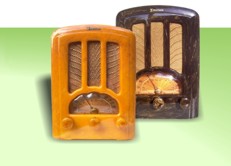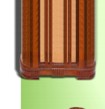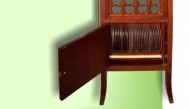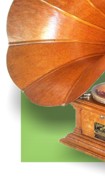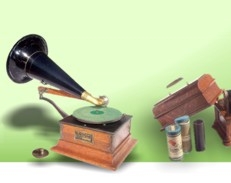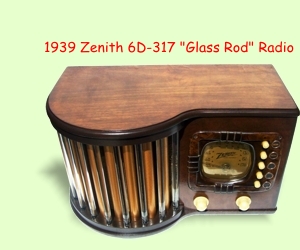|
In a Nutshell
Red butterscotch is the most appealing color combination used for swirled catalin radio cabinets. This beautiful Addison 5D has no chips, cracks, discolorations, scratches whatsoever and works fine on AM and Short-Wave and connects to CD and mp3 players, ipods and cellphones
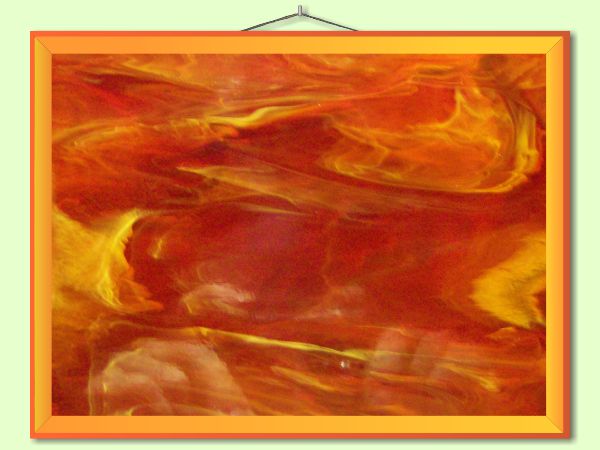
Introduction:
Of the five prewar plastics catalin, beetle, urea, plaskon and bakelite, catalin is the "gem of plastics", followed by beetle, a beautiful special type of plaskon. Radios made from catalin are fetching by far the highest prices, because they get rarer by the minute. Catalin is most subject to material shrinking, causing many of the cabinets having developed cracks, especially when (non-shrinking) chassis' have been screwed too tightly to the cabinets. Catalin is the only material, that could be made in all colours, mostly with two or three of them mixed into swirling patterns (pict.17) and often translucent, as is the case for this radio too (pict.13).
The American Catalin Corporation, following a German recipee, began producing catalin casts in 1927, the very same year that Dr. Leo Baekeland's bakelite patent expired, in New York. Production was suspended in 1942. Catalin was introduced for radio cabinets in the 1930's in order to make radios cheaper than wooden radios, and more attractive than bakelite radios. Typical prices for a bakelite, catalin, or wood radio were $10, $40, and $100, respectively. Today a blue Fada Bullet radio is in the price guides for $5000 and fetches on eBay $3000, a little green Motorola Circle Grille radio was sold for $18'000 a few years ago at an auction in New York. An Addison 5D sold recently for $3337.50 (ref.1). Catalin was also used for vintage fashion accessories and fine, expensive jewelry (ref.2).
The Canadian Addison Industries in Toronto made two catalin models, the 5A (also A5 and "Courthouse") and the 2A ("Waterfall", also "Baby" ). Both of these models were also made in other materials such as styrene, plaskon, bakelite for the Baby, and wood for the Courthouse, and are icons of Canadian commodity design.
Additional information:
ref. 1: http://radioattic.com/item.htm?radio=0370129
ref. 2: http://celluloidforever.com/BakeliteandCatalin.html
ref. 3: http://youtu.be/NBp2XfyU28A
About my radio:
My radio has in fact the correct model number 5D, since it is the red version. The model number is stamped on the chassis, that otherwise seems to be the same for all cabinets (walnut wood 5A, pistacchio 5B, mahogany wood 5C, red 5D, green 5E, yellow 5F). The marbled red with butterscotch trims version of this radio is the most valued among its colour variants. My radio has extremely vibrant and dramatic swirls throughout all its surfaces and is in mint and (except the front decal) original condition, having no chips, scratches, cracks, or discolorations whatsoever. I polished the cabinet slightly, removing the thin alcohol layer deposited over time (see techies below). The dial glass is original and in good shape. The chassis has been thoroughly cleaned and in-depth serviced. All moving parts have been treated with contact spray. All filter capacitors have been replaced. The radio plays loud and clear on AM/BC, can tune in AM even here in Chilliwack, 100 km away from the next AM stations in Vancouver, and receives on short-wave. Its factory installed RCA phono plug allows easy replay of FM radios, CD and mp3 players, iPods and cell phones (watch the youtube video by clicking on pict.33 or go to ref.3. Please e-mail me (Kris) for any questions, ich spreche Deutsch, je parle Français.
For the techies only:
Catalin, like bakelite is a phenol formaldehyde resin, but unlike bakelite does not use fillers and is cast at much lower temperatures and not under pressure, thus allowing a full colour spectrum. Objects from catalin can be easily recognized by their thicker wall thickness, and from their colour transformations with increasing age. Catalin with time (a few years only!) and under the influence of UV light, develops a very thin surface layer of phenyl alcohol, which is brown and can be easily removed with practically any plastic cleaner. Common wisdom is: try it, and you will be amazed by the result, but never ever try it without extensive testing on a butterscotch coloured catalin object, since it will turn it back into its original white alabaster look, which is disliked by most collectors.
|



